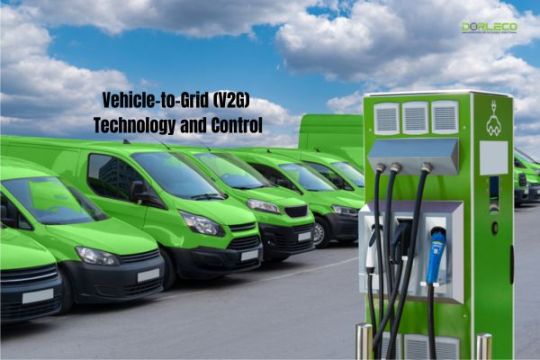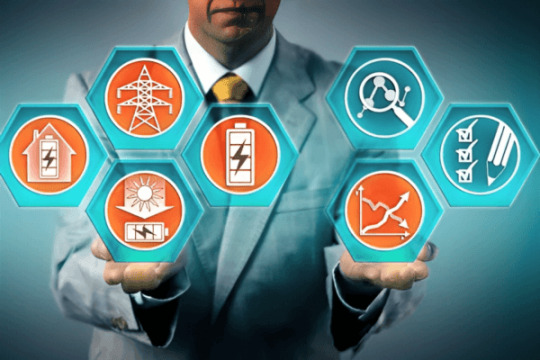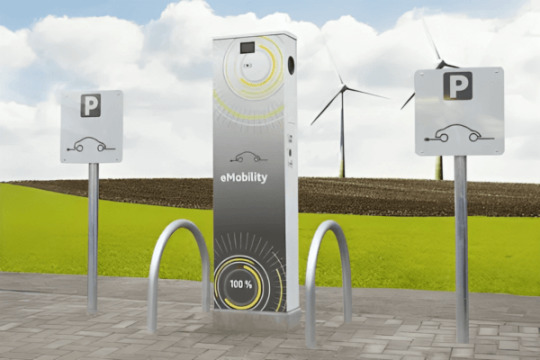#transformingelectricvehicles
Text
Vehicle-to-Grid (V2G) Technology and Control

Introduction
An innovative energy management and transportation development is vehicle-to-grid (V2G) technology and control. With the help of this ground-breaking idea, electric vehicles (EVs) can become dynamic elements of the power grid in addition to being effective and environmentally friendly modes of transportation. By enabling two-way energy transfer between EVs and the grid, V2G technology turns EVs into useful tools for balancing energy supply and demand, boosting grid stability, and advancing sustainability.
Fundamentally, V2G technology enables electric vehicles to do more than just use the grid to obtain electricity for charging; it also gives them the ability to supply the grid with more energy when it is required.
This bidirectional exchange of energy opens up a range of opportunities and benefits:
Grid support: V2G technology can help with grid stabilization by offering an energy supply during times of high demand or emergencies. EVs can act as distributed energy resources, which can lessen the impact of power outages and ease system load.
Demand Response: To control changes in energy demand, utilities can employ V2G. Electric vehicles (EVs) have the ability to release stored energy during times of high demand, easing system load and possibly lowering peak electricity rates.
Integration of Renewable Energy: V2G can aid in more efficient grid integration of renewable energy sources like wind and solar. When supply outpaces demand, excess renewable energy can be stored in EVs and released when demand is strong.

Cost savings: By selling extra electricity back to the grid, EV owners can take advantage of V2G to effectively offset their charging expenses and possibly make money.
Benefits for the Environment: V2G technology is an essential weapon in the fight against climate change since it makes it easier to integrate alternative energy sources and decreases the demand for fossil fuel power plants.
V2G technology’s control component is essential to its effective application. Advanced control systems oversee the two-way flow of electricity, ensuring the grid is stable, and seeing to the demands of EV owners. To optimize the time and magnitude of charging, these control systems take into account variables including grid circumstances, electricity pricing, and the preferences of the car owner. These control systems consider factors such as grid conditions, electricity prices, and the vehicle owner’s preferences to optimize the timing and magnitude of energy exchange.
Advantages of the V2G technology
Vehicle-to-grid (V2G) technology offers a range of significant advantages, both for individual EV owners and for the broader energy ecosystem. Here are some key benefits of V2G technology:
Grid Stabilization: V2G technology can give grid operators a useful tool for the stabilization of the electrical system. It can help avoid blackouts and maintain grid reliability by allowing EVs to feed excess electricity back into the system during times of high demand or emergencies.
Peak load control: V2G allows grid operators to more effectively handle peak electricity demand. When electricity demand is at its highest, EVs can release stored energy, relieving pressure on the system and possibly lowering peak electricity rates.
Reduced Greenhouse Gas Emissions: Greenhouse gas emissions are reduced as a result of V2G’s promotion of the use of clean energy sources, which lessens the demand for fossil fuel power plants and lowers emissions of greenhouse gases. By promoting the use of electric vehicles and the incorporation of renewable energy, it is consistent with efforts to address climate change.
Enhanced Grid Resilience: V2G-enabled EVs can act as backup power sources for residences and essential infrastructure during power outages or emergencies. In disaster-prone locations, this resilience can be quite important.

Optimized Energy Management: Energy management that is optimized by taking into account variables like energy pricing and user preferences is possible with advanced control systems found in V2G technology. This might result in using energy more effectively.
Reduced Energy Waste: V2G minimizes energy waste by ensuring that excess electricity is used effectively rather than being curtailed or wasted.
Disadvantage of the V2G technology
While Vehicle-to-Grid (V2G) technology offers numerous advantages, it also comes with certain disadvantages and challenges that need to be considered. Here are some of the notable disadvantages of V2G technology:
Battery Wear and Degradation: In electric vehicles, frequent charging and discharging cycles can hasten battery wear and degradation. As a result, EV batteries can last less time before needing expensive replacements.
Complex Control Systems: To handle the two-way flow of electricity between cars and the grid, V2G systems need sophisticated control and communication infrastructure. Higher implementation costs and more difficult maintenance issues may be caused by this complexity.
Investment in Infrastructure: Setting up V2G infrastructure, such as charging stations with bidirectional capabilities, can be costly. This expense might impede the mainstream use of V2G technology.
Privacy and Security Concerns: V2G systems necessitate considerable data transmission and communication, which raises questions about data privacy and cybersecurity. Access to V2G systems without authorization could have negative effects.
Challenges with Standards and Rules: Creating uniform standards and rules for the use of V2G technology can be a difficult and time-consuming procedure. Its widespread adoption may be hampered by inconsistent rules across areas.
Dependence on EV Ownership: V2G depends on EV owners’ participation intentions, which can change. The viability of the technology might be constrained if a sizable percentage of EV owners reject V2G initiatives.

V2G Control Techniques
The success of V2G technology depends on efficient control techniques. The following are some crucial checkpoints:
Grid Signals: Electric vehicles (EVs) react to grid signals by modifying their charging and discharging schedules in accordance with grid demand and pricing.
User Preferences: Users can specify preferences for the V2G system to take into account, such as the minimum charge level necessary for daily use.
Predictive Algorithms: Advanced algorithms that estimate grid circumstances are able to optimize charging and discharging schedules.
Conclusion
In conclusion, vehicle-to-grid (V2G) technology and control constitute a paradigm-shifting strategy for transportation and energy management. V2G technology has the ability to fundamentally alter how we produce, distribute, and use electricity while simultaneously accelerating the uptake of environmentally friendly transportation options by transforming electric vehicles into grid-responsive assets. V2G stands out as a viable route to a more sustainable and resilient energy future as we continue to investigate cleaner and more effective energy solutions.
#VehicletoGrid#energymanagement#V2G technology#V2Gtechnology#transformingelectricvehicles#GridStabilization#Dorleco
0 notes